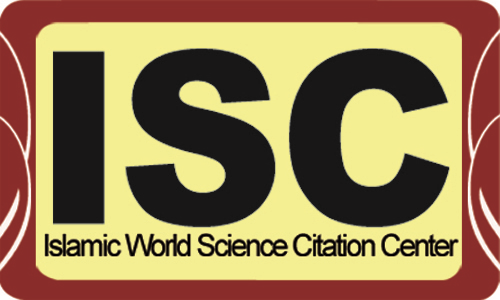Hematological effects of lead exposure and Moringa intervention in rats
DOI:
https://doi.org/10.5281/zenodo.13772448Keywords:
lead acetate, defatted Moringa oleifera seed meal, red blood cell, white blood cellAbstract
In this study, the hematological effects of lead acetate and defatted Moringa oleifera seed meal (DMOSM) were investigated in male Wistar rats. Eighty Wistar rats were assigned into 5 groups (16 rats each) as follows: Group I (negative control), II (lead acetate solution at 480 mg/kg), III (lead acetate solution and DMOSM at 480 mg/kg each, simultaneously), IV (lead acetate solution at 480 mg/kg for the first 14 days, followed by DMOSM at 480 mg/kg for the next 14 days, and V (DMOSM at 480mg/kg). Treatments were administered orally and daily for 28 days. Blood was collected on days 7, 14, 21, and 28 and processed for hematological examination. Results revealed non-significant (p > 0.05) increases in red blood cell parameters (PCV, Hb, RBC) at 7, 14, 21, and 28 days in groups II, III, IV, and V compared to the negative control (Group I). Group III exhibited the highest values, suggesting a potential compensatory mechanism against lead-induced anemia. White blood cell indices showed non-significant (p > 0.05) fluctuations, with Group III displaying a persistent immunomodulatory effect. Neutrophil counts were significantly (p < 0.05) higher in all treatment groups at 7 days, indicating a potential early inflammatory response. In conclusion, the results suggest a potential ameliorative effect of DMOSM on lead-induced haematological alterations. The study, therefore, highlights the intricate interplay between lead toxicity and the protective effects of M. oleifera, underscoring the need for further research to elucidate the underlying mechanisms and validate these findings in diverse populations.
References
Abdelhamid, F. M., Mahgoub, H. A., & Ateya, A. I. (2020). Ameliorative effect of curcumin against lead acetate–induced hemato-biochemical alterations, hepatotoxicity, and testicular oxidative damage in rats. Environmental Science and Pollution Research, 27, 10950-10965.
Abd-Elnaby, Y. A., ElSayed, I. E., AbdEldaim, M. A., Badr, E. A., Abdelhafez, M. M., & Elmadbouh, I. (2022). Anti-inflammatory and antioxidant effect of Moringa oleifera against bisphenol-A-induced hepatotoxicity. Egyptian Liver Journal, 12(1), 57.
Alhusaini, A., Fadda, L., Hasan, I. H., Zakaria, E., Alenazi, A. M., & Mahmoud, A. M. (2019). Curcumin ameliorates lead-induced hepatotoxicity by suppressing oxidative stress and inflammation and modulating Akt/GSK-3β signaling pathway. Biomolecules, 9(11), 703.
Alia, F., Putri, M., Anggraeni, N., & Syamsunarno, M. R. A. A. (2022). The potency of Moringa oleifera Lam. as protective agent in cardiac damage and vascular dysfunction. Frontiers in Pharmacology, 12, 724439.
Ara, A., & Usmani, J. A. (2015). Lead toxicity: a review. Interdisciplinary toxicology, 8(2), 55-64.
Barroso, I., Guimarães, J. T., Severo, M., Craveiro, V., & Ramos, E. (2021). Immunological trajectories of white blood cells from adolescence to adulthood: description and determinants. Diagnostics, 11(11), 2063.
Brilhante, R. S. N., Sales, J. A., Pereira, V. S., Castelo, D. D. S. C. M., de Aguiar Cordeiro, R., de Souza Sampaio, C. M., ... & Rocha, M. F. G. (2017). Research advances on the multiple uses of Moringa oleifera: A sustainable alternative for the socially neglected population. Asian Pacific journal of tropical medicine, 10(7), 621-630.
Chinedu, E., Arome, D., & Ameh, F. S. (2013). A new method for determining acute toxicity in animal models. Toxicology international, 20(3), 224.
Doig, K., & Zhang, B. (2017). A methodical approach to interpreting the red blood cell parameters of the complete blood count. American Society for Clinical Laboratory Science, 30(3), 173-185.
Evans, W. C. (2009). Trease and Evans' pharmacognosy. Elsevier Health Sciences.Wandhekar, S.S., Pawar, V.S., Shinde, S.T., Gangakhedkar, P.S. 2023. Extraction of oil from oil seeds by cold processing: A review. Indian Food Industry Mag. 4(5), 63-65.
Hsieh, N. H., Chung, S. H., Chen, S. C., Chen, W. Y., Cheng, Y. H., Lin, Y. J., ... & Liao, C. M. (2017). Anemia risk in relation to lead exposure in lead-related manufacturing. BMC Public Health, 17, 1-12.
Ibrahim, N. M., Eweis, E. A., El-Beltagi, H. S., & Abdel-Mobdy, Y. E. (2012). Effect of lead acetate toxicity on experimental male albino rat. Asian Pacific journal of tropical biomedicine, 2(1), 41-46.
Ilesanmi, O. B., Adeogun, E. F., Odewale, T. T., & Chikere, B. (2022). Lead exposure-induced changes in hematology and biomarkers of hepatic injury: protective role of Trévo™ supplement. Environmental Analysis, Health and Toxicology, 37(2).
Jikah, A. N., & Edo, G. I. (2023). Moringa oleifera: a valuable insight into recent advances in medicinal uses and pharmacological activities. Journal of the Science of Food and Agriculture, 103(15), 7343-7361.
Kianoush, S., Balali-Mood, M., Mousavi, S. R., Shakeri, M. T., Dadpour, B., Moradi, V., & Sadeghi, M. (2013). Clinical, toxicological, biochemical, and hematologic parameters in lead exposed workers of a car battery industry. Iranian journal of medical sciences, 38(1), 30.
Kou, X., Li, B., Olayanju, J. B., Drake, J. M., & Chen, N. (2018). Nutraceutical or pharmacological potential of Moringa oleifera Lam. Nutrients, 10(3), 343.
Mitra, S., Chakraborty, A. J., Tareq, A. M., Emran, T. B., Nainu, F., Khusro, A., ... & Simal-Gandara, J. (2022). Impact of heavy metals on the environment and human health: Novel therapeutic insights to counter the toxicity. Journal of King Saud University-Science, 34(3), 101865.
Mohamed, M. A., El-Mleeh, A. A., Hamad, R. T., Abu-Alya, I. S., El-Hewaity, M. H., Elbestawy, A. R., ... & Elshabrawy, O. I. (2023). Immunostimulant potential of Moringa oleifera leaves alcoholic extract versus oregano essential oil (OEO) against cyclophosphamide-induced immunosuppression in broilers chicks. Tropical Animal Health and Production, 55(3), 209.
Nfambi, J., Bbosa, G. S., Sembajwe, L. F., Gakunga, J., & Kasolo, J. N. (2015). Immunomodulatory activity of methanolic leaf extract of Moringa oleifera in Wistar albino rats. Journal of basic and clinical physiology and pharmacology, 26(6), 603-611.
Nicholson, L. B. (2016). The immune system. Essays in biochemistry, 60(3), 275-301.
Olufemi, A. C., Mji, A., & Mukhola, M. S. (2022). Potential health risks of lead exposure from early life through later life: implications for public health education. International journal of environmental research and public health, 19(23), 16006.
Rosales, C. (2018). Neutrophil: a cell with many roles in inflammation or several cell types?. Frontiers in physiology, p. 9, 324475.
Xu, Y. B., Chen, G. L., & Guo, M. Q. (2019). Antioxidant and anti-inflammatory activities of the crude extracts of Moringa oleifera from Kenya and their correlations with flavonoids. Antioxidants, 8(8), 296.
Downloads
Published
How to Cite
Issue
Section
Categories
License
Copyright (c) 2024 Scientific Reports in Life Sciences

This work is licensed under a Creative Commons Attribution 4.0 International License.




